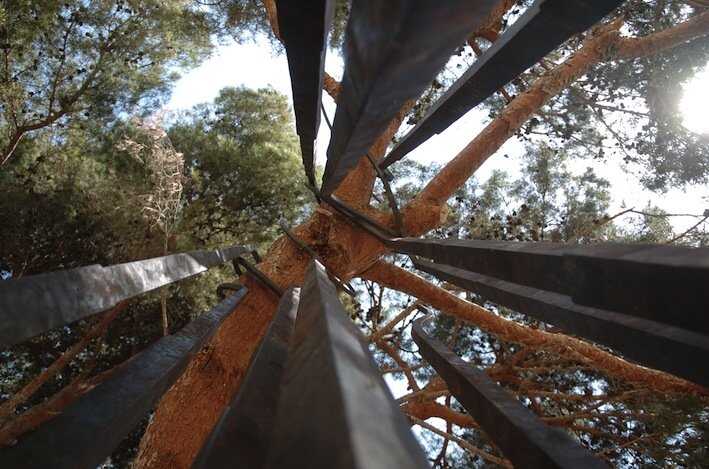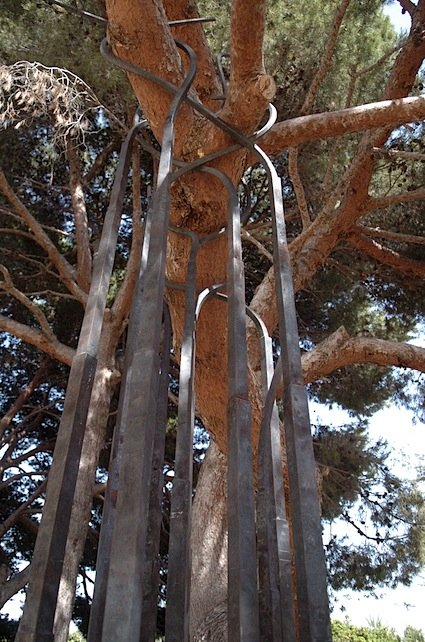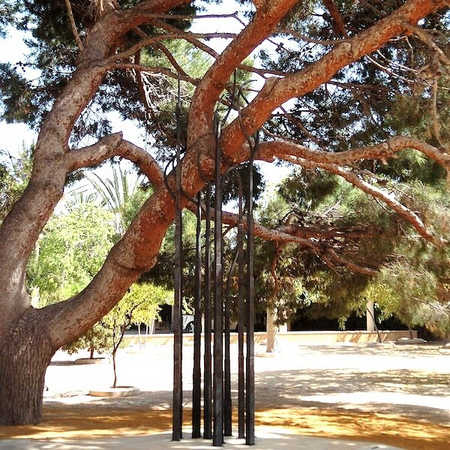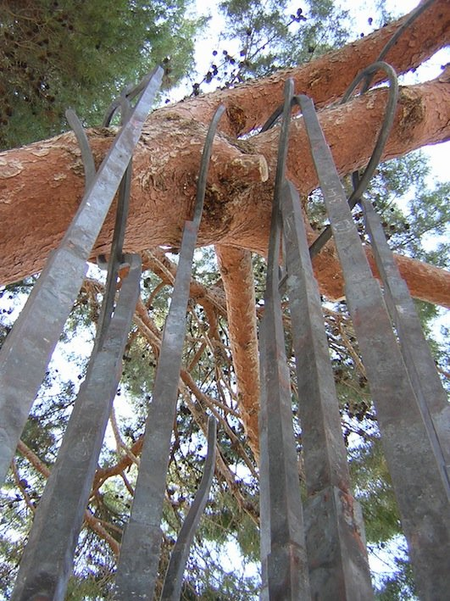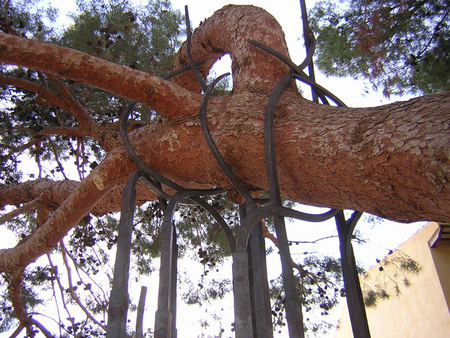intervención en un parque con árboles centerarios.
Por la gran extensión de los pinos es difícil de percibir la escala.
árbol
Factsheet
- Dimensions
- 450cm, 180cm, 150cm (Height, Width, Depth)
- Weight
- 80kg
- Year
- 2006
- Material
- Wood, Metal
- Style
- Monumental, Land Art, Abstract
